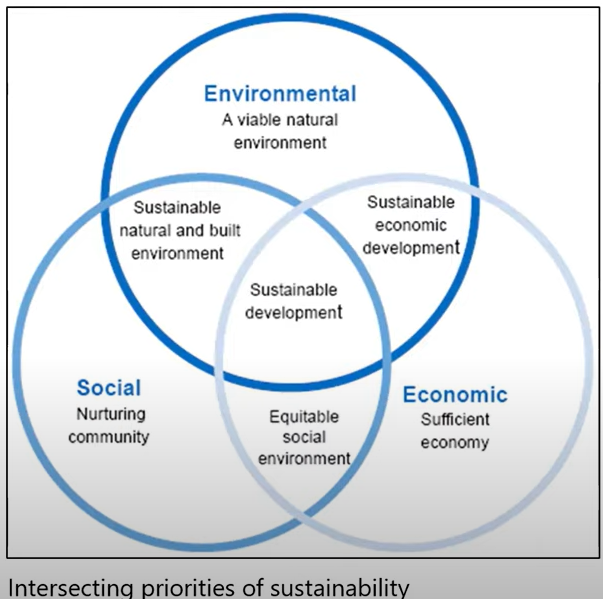AICP Section 2.1.1 - Core Values of Planning
1/13
There's no tags or description
Looks like no tags are added yet.
Name | Mastery | Learn | Test | Matching | Spaced |
|---|
No study sessions yet.
14 Terms
Equity
(Core Value)
“Interwoven Equity Principal” - The goals and policies of a plan for sustaining places should ensure fairness and equity in providing for the housing, services, health, safety, and livelihood needs of all citizens and groups (PAS 567).
AKA - “Equity-in-all”, interwoven equity, equity lens, planning for social equity
Related: Advocacy Planning, Social Justice, Equity-in-all Approach, Empowerment, Community-Based Planning, Paul Davidoff (Planner), Norman Krumholz (Planner)
Paul Davidoff
(Planner)
American planner known for “Advocacy Planning”
Primary litigant in the Burlington County N.A.A.C.P. v Mount Laurel case (Mount Laurel Doctrine/Mount Laurel I)
Norman Krumholz
(Planner)
City Planning Director of Cleveland known for “Equity Planning”
Diversity
(Core Value)
“Changing demographics mean that planners in the public, private, and nonprofit sectors must plan for an increasing number of individuals and families of color. […] Planners can have a positive impact by working to address both historical and current inequities and providing people of color equitable access to opportunity in housing, transportation, employment, and other domains of life” (PAS 593)
Related: Cultural diversity, ethnic and racial diversity, diversity of culture, age, income, gender, and sexual orientation; diversity in the planning profession, value of diversity in planning
Inclusion
(Core Value)
“Inclusive planning incorporates plan-making and implementation processes where all community members feel welcome to participate and are confident that their participation can positively affect outcomes.” (PAS Quicknotes 82)
More than just inviting all community members, planners and officials must learn how systemic inequities created by years of structural racism and discriminatory practices affect willingness and ability of different populations to participate in planning processes. Willingness to change methods and techniques to maximize inclusivity is needed.
Social Justice
(Core Value)
Planners, “shall seek social justice by working to expand choice and opportunity for all persons, recognizing a special responsibility to plan for the needs of the disadvantaged and to promote racial and economic integration. We shall urge the alteration of policies, institutions, and decisions that oppose such needs” (AICP Code of Ethics and Professional Conduct, 2016)
Public Interest
(Core Value)
Refers to the collective well-being of the community. Fair and equitable distribution of resources, benefits, and opportunities. Planners aim to balance individual and community needs, and ensure that development and implementation of policies and plans enhance quality of life, protect the environment, and promote social equity.
Public interest in central to ethical planning practices, requiring transparency, public participation, and accountability to foster trust and inclusiveness.
Related: Public interest vs. private interests; health, safety, morals, and welfare as the public interest (zoning)
Sustainability
(Core Value)
“Improving the quality of people’s lives while living with the capacities of supporting natural and human systems” (APA Sustainability Framework)
Related: Sustainability analysis, sustainable development, Three Es (Economy, Environment, and social Equity), Triple-Bottom Line
Sustainability
(Example)

Resiliency
(Core Value)
"Planning for sustaining places fosters resilient communities, economies, built environments, and natural ecosystems so they are able to anticipate, adapt to, and recover from disastrous impacts from extreme weather events, energy shortages, natural and man-made disasters, and other destabilizing events, as well as longer-term shifts in climate patterns, energy resources, and economic activity” (PAS 567)
Healthy and Prosperous Communities
(Core Value)
“The Healthy Community principle states that the goals and policies of a plan for sustaining places should ensure that public health needs are recognized and addressed through provisions for healthy foods, physical activity, access to recreation, health care, environmental justice, and safe neighborhoods” (PAS 567)
Related: Health Impact Assessment
Democratic Engagement
(Core Value)
“Plan dynamically and democratically. Planning for sustaining places is an ongoing process based on continuous evaluation and monitoring, vigorous citizen participation and conflict resolution, and regular plan updating to ensure that citizens and decision makers are kept abreast of evolving scientific knowledge and community development issues.” (PAS 567)
Related: Citizen participation, public participation, civic engagement, community organizing
Transparency
(Core Value)
Transparency is an essential part of any fair public engagement process. A transparent process is:
Open and honest
Involves no secret meetings or assurances
Is open to the press and reporters
Includes active participation of elected officials
Is portrayed honestly to the public
Makes all information available to the public
Is led by a recognized and impartial community leader (Local Planning)
Related: Open meetings, open records, freedom of information
Core Values
(List)
Diversity
Equity
Inclusion
Social Justice
Public Interest
Sustainability
Resiliency
Healthy and Prosperous Communities
Democratic Engagement
Transparency